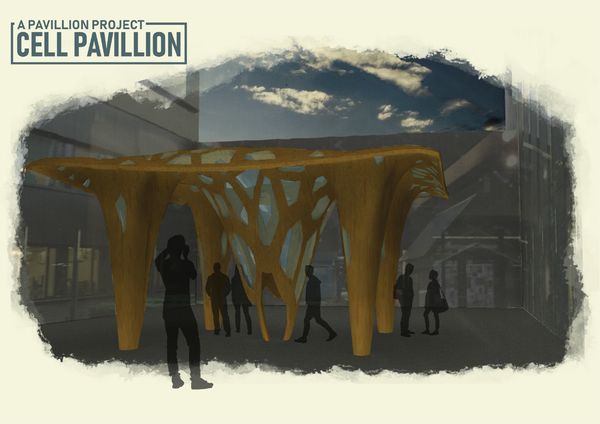Eco-friendly architecture could be achieved through combinations of passive and active strategies and one of the ways is by creating, consuming and reusing energy or resources in a single, continuous closed loop system.
The Cell Pavilion project explores the possibility of manipulating light and shadows by controlling the sizes of cells and through the use of electrochromic glass that darkens when electric passes through. This exploration, done through series of digital modellings and test in Grasshopper, was important to show how dynamic (using electrochromic glass) and static (making varied cell sizes) strategies could affect user experience going through the pavilion.
By The Mancunian project later adopts this dynamic-static relationship as a way to create the aforementioned closed loop system. The mixed use high rise allows creation of energy or resources at different levels of the high rise which then would then be consumed and reused within the high rise community and system itself. The double skin system along with the use of electrochromic facade shows the dynamic-static systems of the high rise which allows for rainwater harvesting that is beneficial for the skyfarm and natural ventilation for the residential units that also provides privacy to the residents too as well as a shading system. The closed loop concept also encourages the interaction between the different users of the high rise and provides opportunities for the users to make use of their hobbies or skills (such as farming, cooking, knitting, etc.) and generate income which would keep the economy within the high rise running. This could help achieve sustainability since ecology, economy and society complement each other as suggested through the sustainability triad.
Eco-friendly architecture is an important concept which I believe could be achieved through many means especially in the technicalities and advancement of technologies in the architecture realm.


